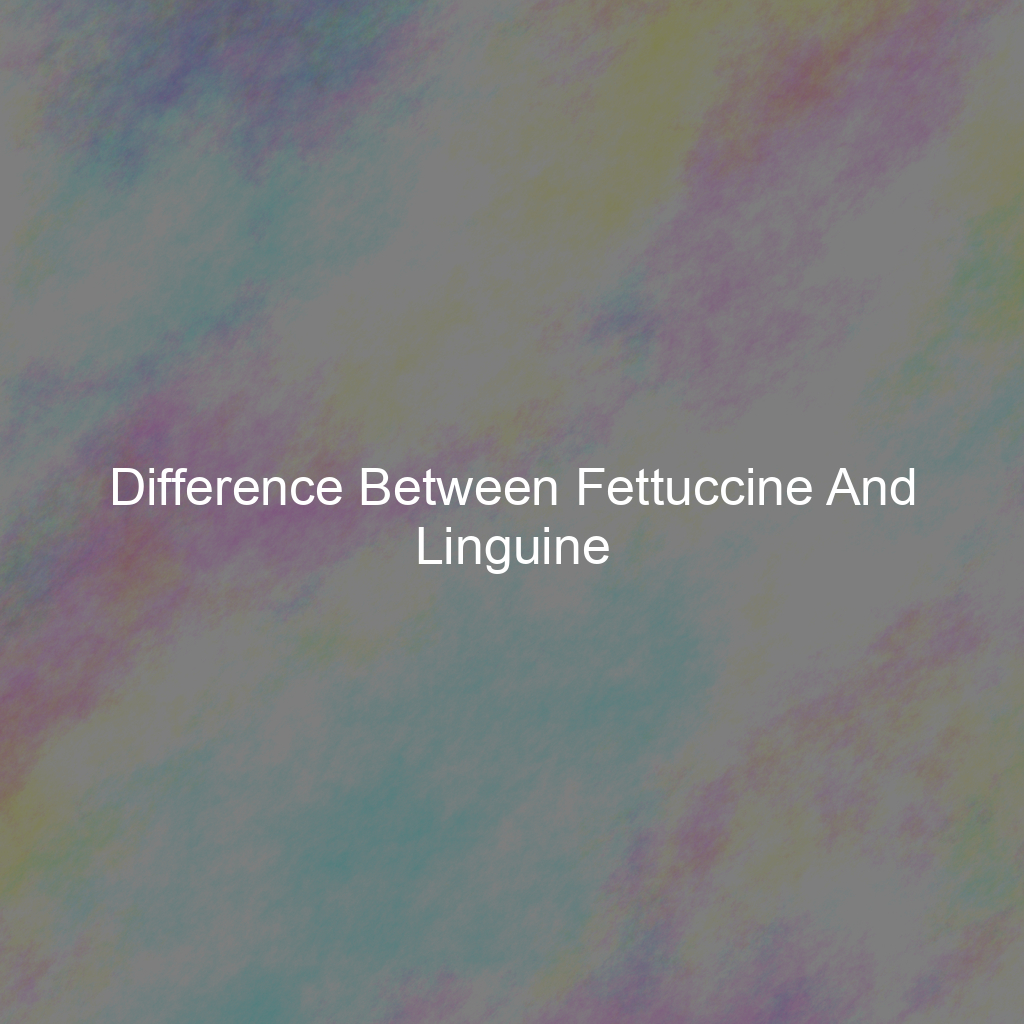Difference Between Fettuccine And Linguine
Difference Between Fettuccine And Linguine
Do you often find yourself confused about the difference between fettuccine and linguine when ordering at an Italian restaurant or cooking at home? Don’t worry, you’re not alone! Let’s break down the key characteristics of these two popular pasta shapes to help you distinguish between them.
What is Fettuccine?
- Fettuccine is a type of pasta that is flat and wide, typically ribbon-like in shape.
- It is a staple in Italian cuisine and is commonly served with rich, creamy sauces like Alfredo or carbonara.
- The word “fettuccine” comes from the Italian word “fettuccia,” which means “little ribbons.”
Next time you’re craving a decadent pasta dish, reach for the fettuccine noodles to complement your creamy sauce perfectly!
What is Linguine?
- Linguine is a type of pasta that is similar to fettuccine but is narrower and flatter in shape.
- The name “linguine” comes from the Italian word “lingua,” which translates to “tongue.” This pasta shape is often referred to as “little tongues.”
- Linguine is versatile and pairs well with a variety of sauces, including tomato-based sauces, seafood, and pesto.
When you’re in the mood for a lighter pasta dish with a bit of a bite, linguine is the perfect choice to satisfy your cravings!
Texture and Taste
- Fettuccine has a flat and wide shape, which provides a hearty and chewy texture when cooked.
- Linguine, on the other hand, is narrower and flatter, offering a more delicate and slightly firmer bite.
- The width of fettuccine allows it to hold up well with creamy sauces, while linguine’s thinner shape complements lighter sauces beautifully.
Depending on your preference for texture and taste, you can choose between fettuccine and linguine to enhance your pasta dishes accordingly.
Cooking Methods
- Both fettuccine and linguine are cooked in boiling salted water until they reach the desired level of doneness.
- It is essential to stir the pasta occasionally to prevent sticking and ensure even cooking.
- When the pasta is al dente (firm to the bite), drain it and toss it with your favorite sauce before serving.
Whether you’re a novice cook or a seasoned chef, mastering the art of cooking fettuccine and linguine will elevate your pasta dishes to new heights!
Pairing Suggestions
- Fettuccine pairs well with creamy sauces, such as Alfredo, carbonara, or mushroom cream sauce.
- Linguine is perfect for lighter sauces like tomato-based sauces, seafood, pesto, or aglio e olio.
- Both pasta shapes can be paired with vegetables, herbs, proteins, and cheeses to create a wide range of delicious dishes.
Experiment with different pairings to discover your favorite flavor combinations and create memorable meals for yourself and your loved ones!
In Conclusion
- Fettuccine and linguine may seem similar at first glance, but they have distinct characteristics that set them apart.
- Understanding the differences in texture, taste, cooking methods, and pairing suggestions will help you make informed choices when selecting pasta for your dishes.
- Whether you prefer the heartiness of fettuccine or the delicacy of linguine, both pasta shapes offer endless possibilities for creating delicious and satisfying meals.
So, the next time you’re faced with the choice between fettuccine and linguine, you’ll know exactly which one to pick based on your preferences and the flavors you crave. Buon appetito!







